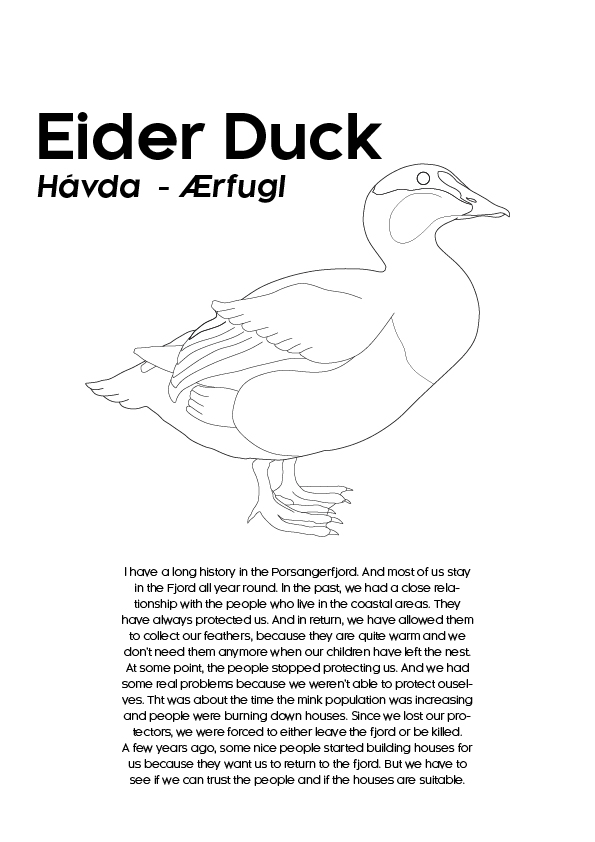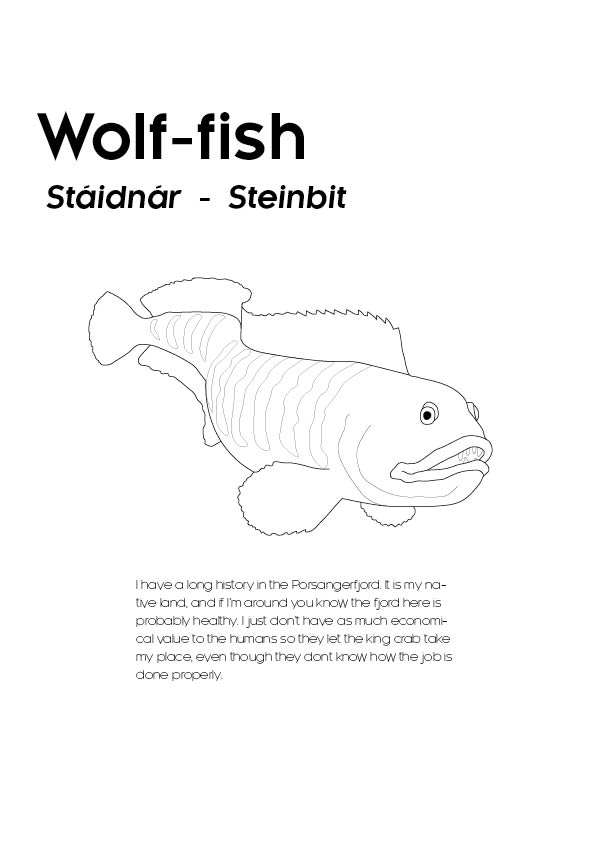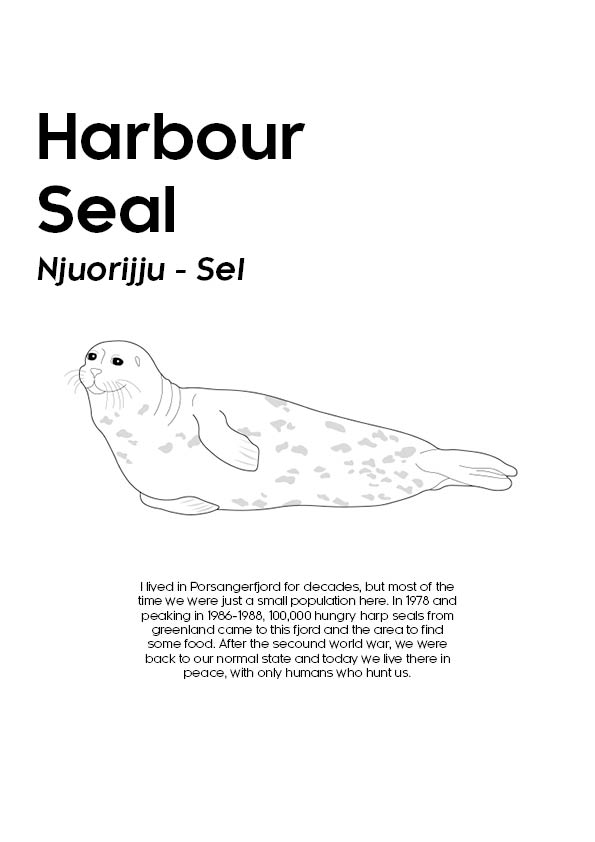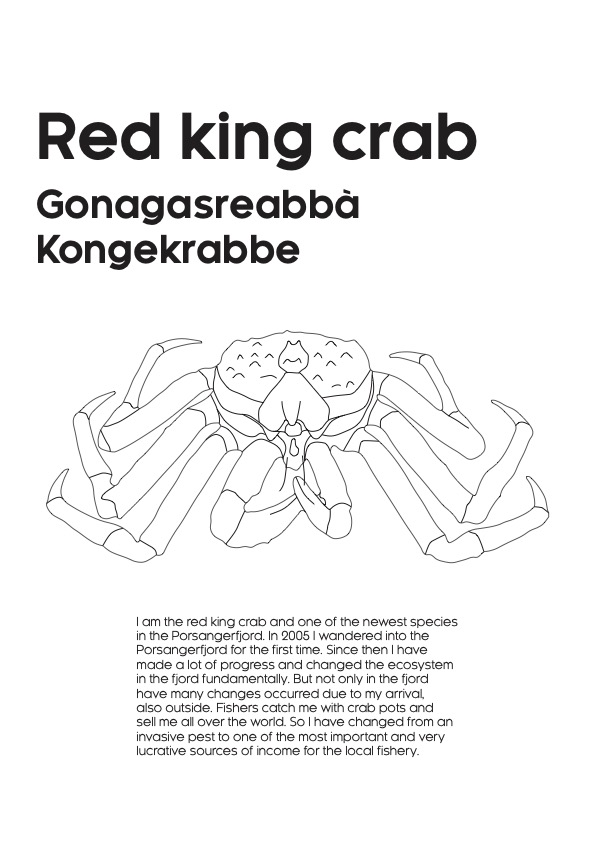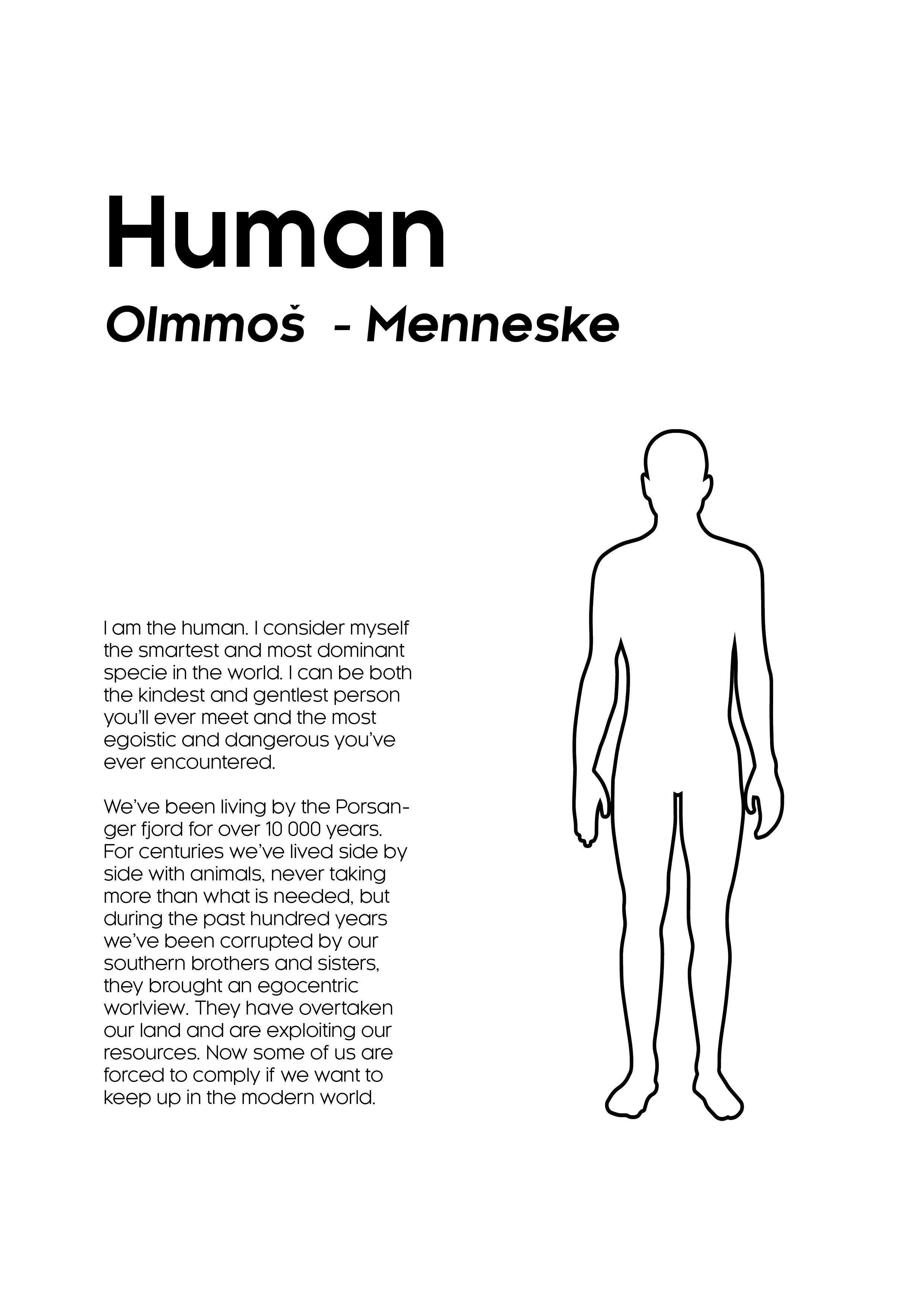WEB OF PERSPECTIVES
Web of Perspectives is an engaging installation exhibiting the interaction between the most prominent species within the Porsangerfjord, located in Finnmark. The eight species called out are Cod, Salmon, Eider Duck, Harbor Seal, Sea Urchin, King Crab, Human, and Wolfish. Each member of the group is assigned one of these eight different species to further research in depth their characteristics, movements, and economic and cultural value within the fjord. Each researched species is then put together in a concise booklet that will each mark the main callouts in the installation. Aside from the main food web, to show our research we overall have five elements in our installation: a food web, a section, an animation, a timeline, and a visualization of a sea urchin invasion.








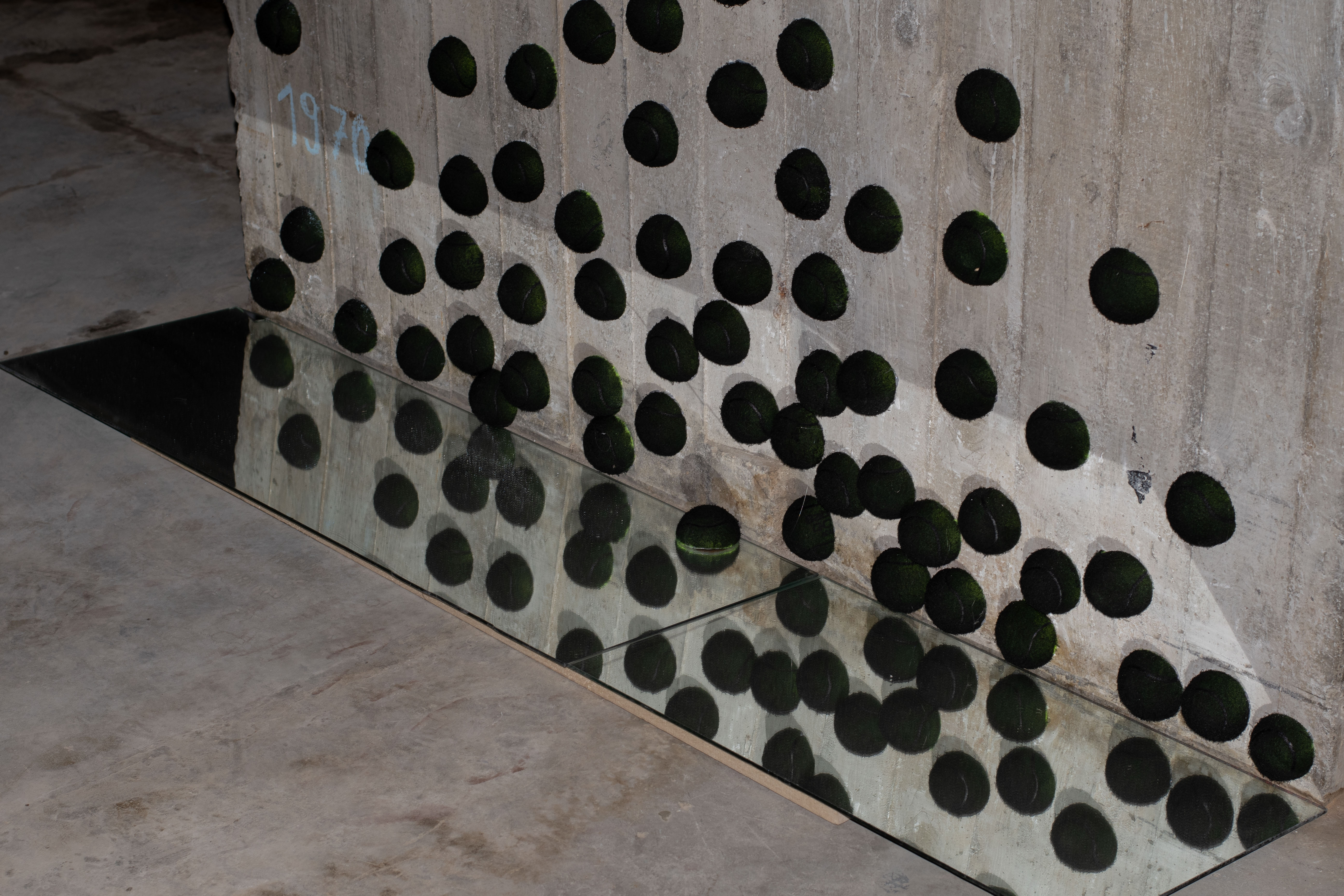


The installation itself is a collection of these eight prominent species along with twenty-four of the other secondary species that these eight interact with to sustain and satisfy the fjord’s ecosystem. Every species is installed separately on a wooden board that is cut apart and split into eight smaller boards to signal the eight species and sums to create a large ring. The center of the ring is left open intentionally for the interaction of all species. Strings are running across the ring over the open ring crossing paths to create the web depending on which species eats/interacts with the other.
As a whole, the installation is exhibited lower to the ground so that the viewer can observe it from above at a bird’s eye view but more importantly, so the viewer is forced to sit down and have an engaging experience with the species through their different perspectives. Once the viewer is seated, they look across the ring at the web of strings and is provoked by an overwhelming yet meaningful experience of the ecosystem in the fjord. Sitting down the viewer is greeted by one of the eight species booklets to read and further analyze the interaction of the food chain across the web through that one species perspective. After analyzing one specie the viewer can then rotate and move around the ring to discover the different species around the web.
The entire installation is situated in a generally dark and intimate space but is lit up by a circular lamp above the ring to mimic the ring shape of the web. The lamp is designed to only light up the space of the web to highlight its importance. The lamp shade is not only a shade but is of used space in the installation to show a timeline of all the important moments in each of the species’ history. The timeline is printed in black, and the information is printed white to create a glowing effect levitating above the web.
To be as economical and sustainable as possible, the installation is built using re-used materials leftover from around the school. The ring was cut and built using recycled wooden planks that were cut into a 1/8th piece of a full ring. These wooden pieces were then placed on concrete cylinder blocks to give a floating effect. As for seating, reindeer skin, sheep skin, carpets, and pillows were used around the ring for the audience to sit comfortably alongside each of the different species.
As a presentation, each group member was seated at their assigned species around the ring and the audience was invited to seat themselves beside them around the ring fully closing it. One by one in an appropriate order each group member speaks about their individual species in the first-person form to personify themselves with their specie. The order is dependent on their interaction with each other with importance until every group member has presented their short spiel. The atmosphere created is intimate and places the audience within the web amongst it. Around the ring it appears as if we are all having an important business meeting, but it is purposeful in order to place everybody in a vulnerable situation. The audience is forced to sit and ponder the ecosystem in their own personal perspective and the impact they and every other species has on one another.
Overall, the installation provides a serene oasis throughout the full exhibition. The intersecting web is intriguing and inviting for passers while the species booklets want them to stay and explore the perspectives of the different species further in depth.
A project by Tim Bögli, Lena Winderen, Mahlon Howard, Evelyn Furnes, Ofir Bouba, Sophie Wenderoth & Ronja Zehnder

